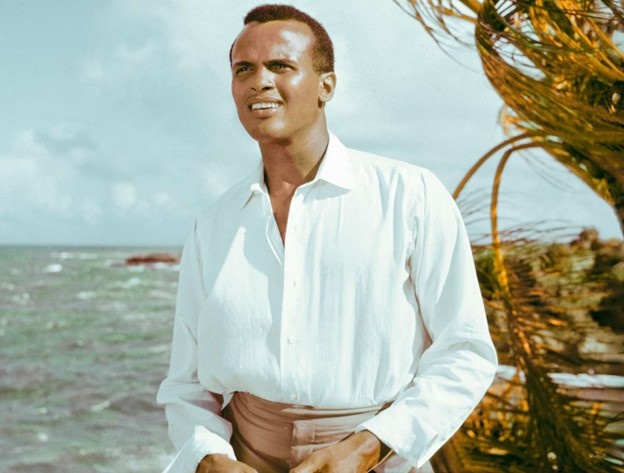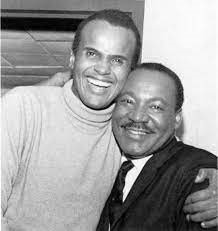Gathering
Let students know that we will begin by listening to a song. Play Harry Belafonte singing the Banana Boat Song:
https://www.youtube.com/watch?v=DYYkJ0kwNss
After listening, ask students to take a few moments to think about what they heard. Ask students:
- How did the song make you feel?
- Do you remember some of the words that the singer sang?
- What about the singer’s voice? Did you notice anything?
- What do you think the singer was singing about?
Allow for processing and share out.
Make connections: Have you ever listened to a song that made you think about somewhere that you had visited? Or that made you about a loved one?
"The Banana Boat” Man Speaks Out about Injustice!

Bring up a picture of a young Harry Belafonte. Let students know that this is the man who sang the song, which is called “The Banana Boat” song. He was singing about a place that meant a lot to him.
Let students know that Harry Belafonte was a famous singer and actor. He moved to America with his family from Jamaica in the 1930s. He and his family were “immigrants.”
Ask students:
- Have you heard of the word “immigrant” before? Elicit responses.
Share that immigrants are people who move from their homeland to another country for a better life. Ask students how many of them are from families that may have moved from some place else to here in the U.S. Allow for student responses. Encourage students to name the countries that their own families have come from.
Option: Have a large chart paper posted and colored markers. As students are ready, have them take a colored marker and write the name of their home country.
Make connections if one of your students is also an immigrant from Jamaica. Then let students know that when Harry and his family arrived, they settled in Harlem, New York. Young Harry loved acting and singing and when he was older began to take lessons. As a young man, he appeared on Broadway, in movies, and on television singing and acting.
But despite his successes, something was bothering Harry. Ask students:
- What do you think could have been bothering Harry as a young man?
Wait for a few responses. Then let students know that Harry Belafonte was bothered by the injustices that he saw in the world at the time. Black people, who looked just like him, were not being treated fairly here in the U.S.
Ask students:
- Do you know what the word “injustice” means?

Let students know that an ‘injustice” is when a person or a group of people are treated unfairly. They aren’t given the same rights or opportunities that others have.
Harry started to speak out about “injustices” he saw around him. For instance, there were not enough jobs for Black people. Many Black people were not allowed to vote. Black people went to separate schools, had separate bathrooms, and had to sit at the back of the bus just because they were Black.
Harry even became friends with Dr. Martin Luther King and helped him organize the March on Washington. Show this picture of Harry Belafonte and Dr. King.
Activity: Calling Out Injustices
Ask students to think about some injustices that may exist in their own community.
Give students a few moments for processing. Give students examples of injustices like “homelessness,” people going hungry etc. Have students write down the name of the injustices on colored construction paper.
Explain to students that we will listen to the beginning of the Banana Boat song again. You can say: Didn’t it sound like he was calling out to someone or something? Let’s listen again just to the beginning.
Listen to the beginning of the song with students. Explain that Harry is calling out and he wants his voice to be heard. We want our voices to be heard too. So, we are going to be like Harry Belafonte and call out injustice. Teach students the “justice call”:
Day O, Day O
Day, is a day, is a day, is a day, is a day, is a day-o
Note: If students are having difficulties with the second line, just teach the first. You can also display words on chart paper.
Call and Response
Explain to students that as a “community,” they are going to call out the injustices in their communities. Have students form a circle. Everyone will call out together, choral style:
Day O, Day O
Day, is a day, is a day, is a day, is a day, is a day-o
Then the first student will step forward into the inner circle and name the injustice displayed on their sheet of paper. After calling out, they will then step back into the circle. The whole group will again do the “justice call.” Then the second student will go. Repeat until all students’ voices have called out their injustice.
Closing
Have students do a singular high five.
Vocabulary Words
- Immigrant
- Injustice
- Community